Prefabricated Facade Panel Systems
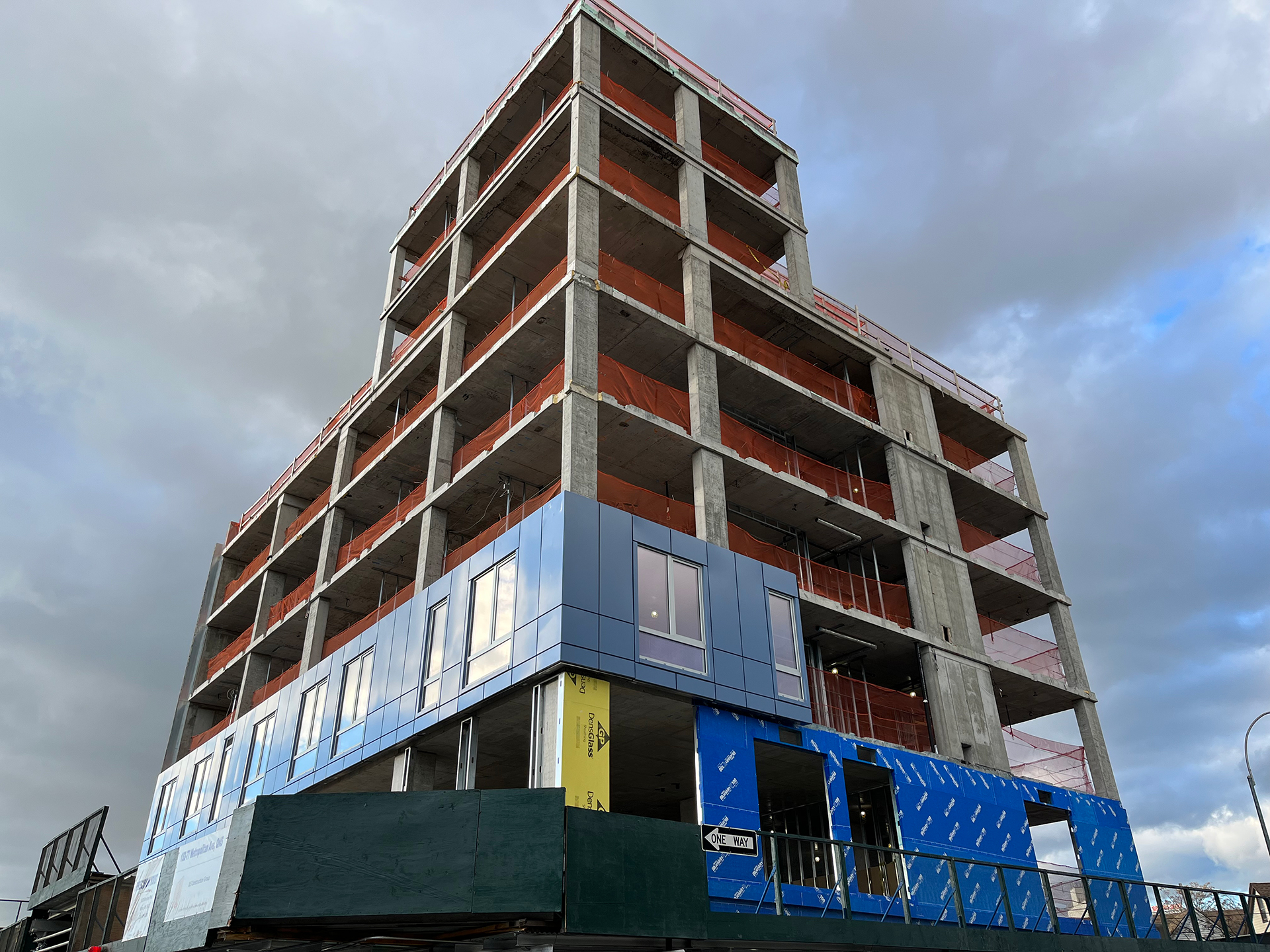
Prefabricated facade panel systems are changing the approach to construction.
Prefabricated facade panel systems are transforming construction methods in many countries, including the United States, by offering solutions that allow projects to be completed much faster, at lower costs, and with consistent technical performance. By combining advanced manufacturing technologies with innovative software, these systems significantly accelerate project delivery and reduce overall expenses without compromising quality. As a result, they are becoming increasingly popular in the new and retrofit construction.
Prefabricated facade panels are factory-produced units that ensure consistent quality, a high level of thermal insulation, and building durability. Additional advantages such as fast installation, reduced labor requirements, and compliance with environmental standards make these systems an optimal choice for efficient and sustainable construction.
Dextall, one of the leaders in the development and supply of prefabricated facade systems, implements such approaches by offering innovative solutions that meet the highest building standards in the United States and other countries, helping to meet market demand for fast, efficient, and environmentally friendly construction.
Prefabricated Walls
Prefabricated walls are factory-made structures used as an alternative to traditional on-site construction methods.
Prefabricated walls represent one of the key innovations in modern construction, combining high quality, sustainability, and cost efficiency. Factory fabrication helps avoid many issues inherent in traditional techniques, speeds up project completion, and ensures precision that meets strict building standards and climate requirements.
Structural Features of Prefabricated Walls
Prefabricated walls have a multi-layered design composed of the following main elements:
- Frame - steel or aluminum, engineered to withstand climatic, seismic, and wind loads in different regions.
- Thermal insulation layer - made from certified materials with high chemical stability and low thermal conductivity, significantly reducing heat loss.
- Hydro and vapor barrier - protects internal layers from moisture, preventing damage and mold formation.
- Exterior cladding - concrete, metal, composite materials, stone, brick, or stucco, meeting architectural requirements and offering a wide range of design options.
Each panel undergoes strict factory quality control and multiple tests to ensure compliance with project standards and safe long-term performance. The precision of factory fabrication allows panels to be installed easily, adapted to local conditions, and ensures reliable operation of the facade for many years.
Time Savings and Quality Assurance
One of the main advantages of prefabricated walls is the significant reduction in overall construction time. Since panel production is carried out simultaneously with site preparation:
- Panels are delivered ready for installation, which eliminates the need for "wet" processes, allows work to continue in any season, and accelerates assembly.
- The use of factory automation and control systems minimizes manufacturing defects, which in traditional construction may cause additional corrections and delays. This technology enhances the quality of the finished facade and the reliability of the structure.
- The need for large on-site labor is reduced by up to 87%, which increases safety and lowers overall personnel costs.
- Reduced construction waste and optimized logistics further contribute to resource savings.
These advantages make prefabricated walls a reliable foundation for sustainable, fast, and modern construction. Dextall actively integrates these benefits into its products, offering high-tech, eco-friendly, and economically efficient solutions.
Prefabricated Wall Panels
Prefabricated wall panels provide consistent quality, faster project delivery, and higher efficiency in modern construction.
Prefabricated wall panels are factory-made facade elements composed of multiple layers responsible for the building's strength, thermal insulation, and aesthetics. Their role in U.S. construction has grown significantly in recent years due to their ability to combine factory-level quality with the speed of on-site installation. The distinction between prefabricated panels and prefabricated walls is important for understanding their functions and benefits.
Unitized Prefabricated Exterior Wall Panels by Dextall
Dextall's unitized prefabricated panels are innovative exterior wall systems produced off-site to precise specifications, ensuring high quality and efficient installation. These panels are designed for both new builds and retrofits, with a focus on durability, energy efficiency, and streamlined construction.
Key features of Dextall unitized panels:
- Integrated multi-layer system: Each panel incorporates factory-installed windows, cladding, and non-combustible core insulation in a light-gauge metal frame.
- Superior energy performance: Achieve up to 40% better energy efficiency than standard code-compliant wall assemblies.
- Airtight and watertight installation: Plug-and-play interlocking gaskets at joints eliminate the need for wet sealants or scaffolding, helping ensure consistent enclosure quality.
- Design flexibility: Multiple exterior finish options, including premium brick, fiber cement, aluminum, ACM, ultracompact surfaces, and integrated solar (BIPV), allow for a wide variety of architectural designs.
- Faster construction process: Panels are delivered ready to install, significantly reducing on-site labor and installation time by up to 70% compared to traditional methods.
- Sustainable and cost-effective: Lower energy use, reduced material waste, and minimal maintenance help support sustainability and deliver long-term savings
Standardization of Design and Quality Control
In factory conditions, prefabricated panels are produced under strict quality standards, which is one of their key advantages. The combination of computer modeling, automated control systems, and robotic production lines ensures:
- Dimensional and shape consistency for precise installation.
- Control over material thickness, insulation layer uniformity, and adhesive bonding.
- Compliance with U.S. fire safety codes, energy efficiency certifications (LEED, WELL), and local regulations.
- Minimization of human errors and defects common in traditional on-site construction.
This standardization not only shortens construction timelines but also guarantees predictable quality and durability of facade systems. Importantly, design flexibility is preserved-contractors can choose from various finishes and configurations, allowing panels to adapt to any architectural solution.
Prefabricated wall panels are an ideal solution for modern projects requiring high performance, sustainability, and aesthetics. Dextall integrates these principles into its production, offering a product with guaranteed quality, rapid installation, and compliance with the highest U.S. building standards.
Types of Prefabricated Wall Panels
Panels made of concrete, brick, stone, cement, stucco, and insulated solutions-each category has its own purpose.
Prefabricated wall panels are available in a variety of materials, allowing different architectural, operational, and energy-efficiency requirements to be met. Each panel type has unique technical characteristics that affect their use in residential and commercial construction.
Material Characteristics and Applications of Each Type
Concrete panels are known for their high strength, durability, and resistance to different climate conditions. They can withstand heavy loads and have a relatively affordable cost, making them popular in commercial construction and infrastructure projects.
Brick panels replicate the classical look of brick masonry, allowing them to be integrated easily into traditional urban areas without losing aesthetic appeal. Their installation is much faster than traditional masonry while maintaining an attractive appearance.
Stone panels provide a premium look and are used in projects that emphasize prestige and exclusivity. Stone adds natural resilience and unique textures to facades, increasing the value of a building.
Cement and stucco panels are versatile solutions that enable rapid facade construction with excellent performance characteristics and a variety of textures. They are ideal for buildings of different purposes, providing protection from weather conditions.
Insulated panels are multilayered systems with a highly effective thermal core, widely used in the U.S. to promote energy savings and reduce carbon emissions. They are ideal for passive and low-energy buildings.
Thanks to this variety of materials, developers can choose optimal solutions for different climate zones and architectural requirements, combining durability, visual appeal, and functionality.
Insulated Panels and Integration with Solar Technologies (BIPV)
Insulated panels are a key component of modern energy-efficient construction technologies. They consist of a multilayered "sandwich," where the central part serves as a highly efficient insulator, and the outer layers provide protection and facade aesthetics.
One of the most innovative characteristics of these panels is the possibility of integrating them with photovoltaic facade technologies-BIPV (Building Integrated Photovoltaics). These systems enable the generation of electricity directly from facade elements, transforming a building into a source of clean energy.
Advantages of insulated panels with BIPV:
- Energy efficiency: reducing energy consumption for heating and cooling.
- Environmental benefits: contributing to the reduction of a building's carbon footprint.
- Functionality: combining weather protection with electricity generation.
- Aesthetics: offering a wide range of designs and the ability to create unique facades with semi-transparent or colored photovoltaic modules.
Dextall actively implements such advanced solutions, providing clients not only with the reliability and quality of its prefabricated facades but also with additional opportunities for sustainable development and energy savings in modern construction.
Manufacturing and Installation of Prefabricated Wall Panels
Controlled factory production and on-site installation are a guarantee of quality and compliance with standards.
The manufacturing of prefabricated wall panels is a complex and strictly regulated technological process that requires adherence to codes and requirements established for modern U.S. construction. The advantage of factory production lies in the ability to ensure high precision, repeatable characteristics, and comprehensive quality control of each unit. Dextall actively applies these standards, using automated production lines and intelligent solutions to achieve an entirely new level of facade system performance.
Key Stages of Manufacturing and Quality Control
The process begins with a careful selection and inspection of raw materials to guarantee compliance with the highest strength and sustainability standards. Next comes the automated panel forming stage, which includes the layering of insulation, reinforcement, and the application of protective and decorative coatings.
Special attention is given to operational control at every production stage:
- Incoming inspection of materials and components according to certificates.
- In-process control, including checks of dimensions, thickness of each layer, airtightness, and strength.
- Testing of finished panels for strength, rigidity, and durability using standard methods such as ultrasonic and static tests.
- Pre-shipment inspections, including geometric dimension verification against design requirements.
Each batch of panels undergoes thorough technical supervision, ensuring consistent quality and the absence of manufacturing defects. This integrated approach helps avoid issues during installation and operation.
Compliance with U.S. Building Codes
Dextall prefabricated facade panels are designed and manufactured in full compliance with U.S. building codes and regulations, ensuring superior quality, safety, and long-term performance in all climate conditions and regulatory environments.
The main regulatory requirements supporting the effectiveness and compliance of Dextall facade systems include:
- Local Law 11 and Local Law 97 (New York): decisive laws regulating fire safety and environmental performance of facades in dense urban environments. Local Law 11 requires the use of non-combustible materials and regular facade inspections to prevent accidents and threats to life. Local Law 97 focuses on reducing greenhouse gas emissions, promoting the use of energy-efficient technologies and materials, and enabling additional certification opportunities through LEED and WELL.
- LEED and WELL energy efficiency standards: ensure high thermal resistance, significantly reducing energy consumption for heating and cooling. They also improve indoor climate, enhancing comfort and health for residents and employees, while meeting environmental safety requirements.
- International Building Code (IBC): the fundamental collection of U.S. building standards covering structural strength, stability, and fire safety. The IBC defines standards for high-rise and complex developments including seismic and climate adaptation of facade systems, which is vital for regions with diverse natural risks.
Certificates of Conformity and Quality Control
Dextall products have official certification confirming compliance with technical, fire safety, environmental, and performance standards in the U.S.
- Quality checks are performed at every stage, from material selection to final panel testing.
- Rigorous laboratory and field testing include evaluations of strength, durability, fire resistance, and thermal performance.
- Climate adaptation for public and residential buildings ensures suitability across different U.S. regions, with facades designed to withstand temperature fluctuations, humidity, winds, snow loads, and solar radiation.
Sustainability and Environmental Responsibility
- Use of recyclable materials and environmentally safe components.
- Reduction of construction waste through high-precision factory production and optimized logistics.
- Support for initiatives aimed at reducing the carbon footprint of the building sector.
These detailed requirements guarantee that the entire cycle-from design and manufacturing to panel installation-meets the highest standards of modern construction. For developers and architects, this ensures
Advantages of Prefabricated Wall Panels
Prefabricated panels provide speed, strength, efficiency, and predictable costs for projects of all scales.
Prefabricated wall panels are the optimal choice for developers who value time, budget, and quality. They combine innovative technologies with practicality, enabling the implementation of projects ranging from low-rise residential complexes to large commercial buildings with unique designs.
Reduced Timelines and Lower Costs
- One of the greatest advantages of prefabricated panels is the significant reduction in construction timelines. Thanks to factory production carried out in parallel with site preparation, installation can be completed quickly and efficiently without delays caused by weather conditions or on-site complexities.
- Performing most of the work in controlled conditions minimizes defects and inaccuracies typically associated with on-site assembly. This reduces expenses linked to rework and corrections.
- Lower labor needs on-site decrease total personnel costs and the demand for highly skilled workers, which is particularly important given the current shortage of construction labor.
- Optimized logistics and the use of automated panel packaging systems reduce transport damage, saving additional resources.
- "Dry" installation without wet processes shortens build time and allows construction even in adverse weather conditions, ensuring adherence to schedules.
Together, these factors guarantee savings of both time and money throughout all project stages, making prefabricated panels an effective tool for developers.
Compliance with Local Law 11 and 97, Energy Efficiency
- Dextall prefabricated panels comply with the fundamental technical and environmental standards in the U.S. that regulate the fire resistance and energy performance of facades.
- Local Law 11 and 97 in New York impose strict requirements on facade fire safety, including the use of non-combustible and certified materials, ensuring the protection of both residential and commercial buildings.
- Prefabricated panels have enhanced thermal insulation properties, allowing them to meet energy efficiency standards and reduce heating and cooling expenses.
- LEED and WELL certifications confirm that these facade systems support environmental sustainability and contribute to healthy and comfortable living and working environments.
- Energy savings and compliance with modern codes help avoid penalties and strengthen a developer's reputation as a responsible and future-oriented market player.
Such code compliance not only improves the competitiveness of projects but also adds value for investors and end users.
Prefabricated Facade Panel Systems in the U.S. Market
The demand for prefabricated facade panels is growing rapidly, especially in the United States with its active construction sector.
The modern construction market in the U.S. shows a significant increase in interest toward prefabricated facade panel systems, driven by their efficiency, speed of installation, and ability to meet strict regulatory requirements. The highest adoption rates for such systems are observed in economically active regions with strong demand for housing and commercial properties.
Geographic Distribution and Popularity
Prefabricated facade panels are increasingly used in large and mid-sized U.S. cities where construction activity is intense. The most popular markets include:
- New York - due to strict fire safety regulations and high building density, where facade efficiency and safety are critical.
- California - climate conditions encourage the construction of energy-efficient buildings using lightweight, durable facade solutions.
- Texas and Florida - regions with harsh weather conditions requiring seismic-resistant and wind-resistant facade systems.
- Other cities such as Boston, Philadelphia, Chicago, and Washington are also actively implementing prefabricated panels in their building projects.
Their popularity is explained by the rapid pace of construction, which demands shorter timelines and higher quality, as well as by developers' goal to meet strict environmental and technical standards. Prefabricated systems integrate easily into different architectural styles, expanding the possibilities for design solutions.
Cost Factors and Consumer Expectations
The cost of prefabricated facade panels is determined by high-tech production, quality materials, and optimized logistics. U.S. market consumers expect:
- Budget transparency - predictable costs for materials and installation thanks to an integrated factory-to-project process.
- Optimal price-to-quality ratio - facades must provide durability and minimal operating costs that justify the initial investment.
- Fast project completion - reduced construction timelines decrease financial risks and increase profitability.
- Sustainability and efficiency - rising demand for LEED and WELL-certified facades that confirm low carbon footprint and energy efficiency.
- Customized design solutions - the ability to choose finishes and configurations that meet a client's unique stylistic and technical requirements.
To remain competitive in the U.S. market, developers choose prefabricated facades for their ability to combine technological innovation, financial efficiency, and compliance with strict standards. As an industry leader, Dextall meets these expectations by offering comprehensive solutions with guaranteed quality and long-term performance.
Why Prefabricated Panels Attract Architects
Architects choose prefabricated systems for flexibility, sustainability, compliance with standards, and innovation.
Modern architects are increasingly favoring prefabricated facade systems because of their ability to provide wide creative freedom while simultaneously meeting sustainability requirements and modern building regulations. Thanks to innovative manufacturing technologies and digital modeling, these systems make it possible to implement the most complex visual and technical concepts, enhancing both aesthetics and functionality of buildings.
Finishing Options and Design Freedom
- Prefabricated panels allow architects to work with a wide variety of materials and textures, opening limitless opportunities for creating unique facade solutions.
- Available facade finishes include imitations of stone, brick, metal, stucco, and large-format panels that maintain durability while meeting aesthetic standards.
- Modern manufacturing technologies not only standardize elements but also enable a high degree of customization-shapes, sizes, colors, and textures can be adapted to projects of any complexity.
- Digital design that incorporates thermal, structural, and operational parameters allows architects to accurately predict the final appearance of the facade, minimizing the risk of corrections during construction.
- The lightness and speed of prefabricated panel installation enables a quicker transition to finishing works and building commissioning within record timelines.
- The design flexibility of prefabricated panels opens new possibilities for combining traditional and modern architectural styles, making facades not only functional but also expressive and attractive to end users and investors.
Compliance with LEED and WELL Environmental Certifications
- Adherence to environmental standards has become a key factor for architects when choosing facade systems, especially amid growing attention to sustainable construction.
- LEED and WELL certifications confirm that Dextall materials and technologies promote building energy efficiency, reduce environmental impact, and improve indoor air quality.
- Choosing such systems helps projects earn green certifications that increase their market value and attractiveness to investors and tenants.
- Panels feature a low carbon footprint, are made from recyclable materials, and help reduce construction waste.
- Effective thermal insulation lowers energy consumption for heating and cooling, which is critical for reducing operating costs and the building's carbon footprint.
These standards are reflected in every aspect of prefabricated panel production and application, making Dextall a reliable partner for architects seeking to combine innovation, responsibility, and creativity in their projects.
Dextall Prefabricated Facade Panels
Dextall offers certified prefabricated facade panels that combine modern design, efficiency, and architectural flexibility.
Dextall panels are the result of advanced technologies that enable the creation of durable, reliable, and aesthetically appealing facades for modern buildings. They are an ideal choice for developers and architects who value the combination of innovation, functionality, and high quality.
Certifications and Compliance with U.S. Standards
Dexwall products undergo strict certification processes that guarantee full compliance with all requirements of the U.S. construction market:
- Compliance with Local Law 11 and 97 covering fire safety and environmental responsibility, reducing risks and environmental impact.
- Availability of LEED and WELL certifications, confirming high energy efficiency of the panels and contributing to a healthy indoor climate in buildings.
- Compliance with IBC (International Building Code), which includes testing for strength, wind resistance, seismic stability, and overall structural safety.
- Compliance with Passive House Standards, ensuring ultra-low energy consumption, superior thermal comfort, and alignment with sustainable construction practices.
- Use of high-quality materials certified to be free of harmful substances, meeting environmental standards and ensuring long-term performance.
These certifications help clients obtain building permits, enhance investor confidence, and contribute to the successful completion of projects in a competitive market.
Material Features and Installation Speed
The materials used by Dextall combine strength, lightness, and aesthetics, positively affecting both installation technology and facade durability:
- Panels are manufactured from modern composites, polymer-coated metals, concrete, and other raw materials with high resistance to ultraviolet radiation, corrosion, moisture, and mechanical damage.
- The original panel design includes elements for quick and secure fastening, reducing installation time and minimizing labor costs.
- Factory precision ensures easy assembly and facilitates the integration of diverse architectural design elements into the facade.
- The installation system requires minimal wet processes, allowing work to continue across a wide range of climate conditions and ensuring project schedule stability.
- Lightweight panels reduce loads on supporting structures, opening additional architectural opportunities.
Premium Dextall facade panels are a complete solution that guarantees developers and architects high performance, user comfort, and a distinctive building appearance while fully complying with the strictest U.S. construction standards.
Frequently Asked Questions (FAQ) about Dextall Prefabricated Facade Panels
What are the advantages of Dextall prefabricated facade panels?
The panels are factory-made and quickly installed, reducing construction timelines by up to 80%. They are distinguished by high quality, energy efficiency, and compliance with U.S. standards (Local Law 11 and 97).
Are they suitable for different climate zones?
Yes, the panels are resistant to wind, moisture, seismic loads, and perform well in all climate conditions.
How do they meet environmental standards?
Certified LEED and WELL materials are used, reducing energy consumption and the building's carbon footprint.
What is the service life of the panels?
More than 30 years, thanks to high-quality materials and protection against UV radiation, moisture, and mechanical damage.
Can individual panels be repaired or replaced?
Yes, the fastening system allows damaged elements to be replaced easily without dismantling the entire facade.



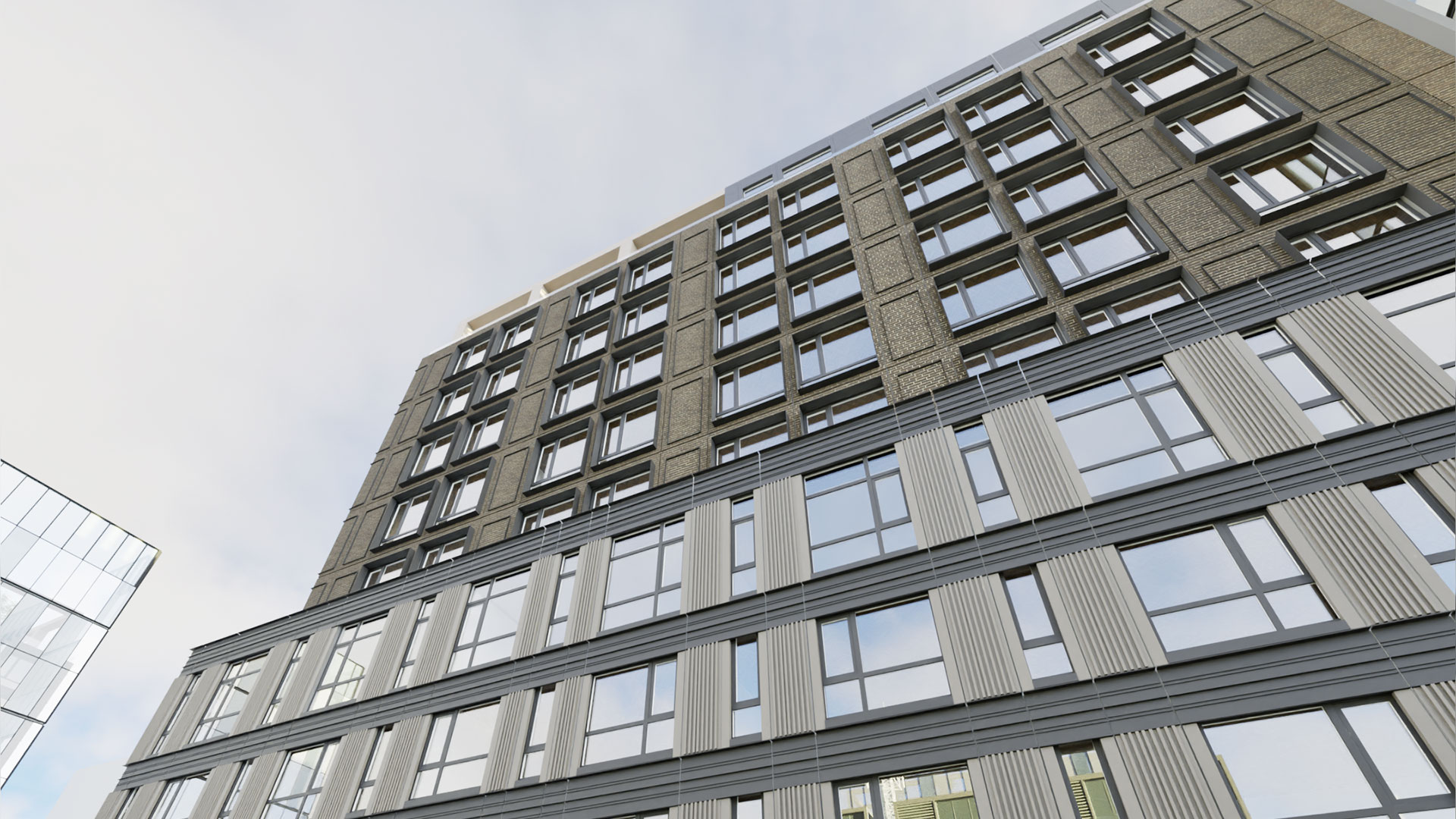
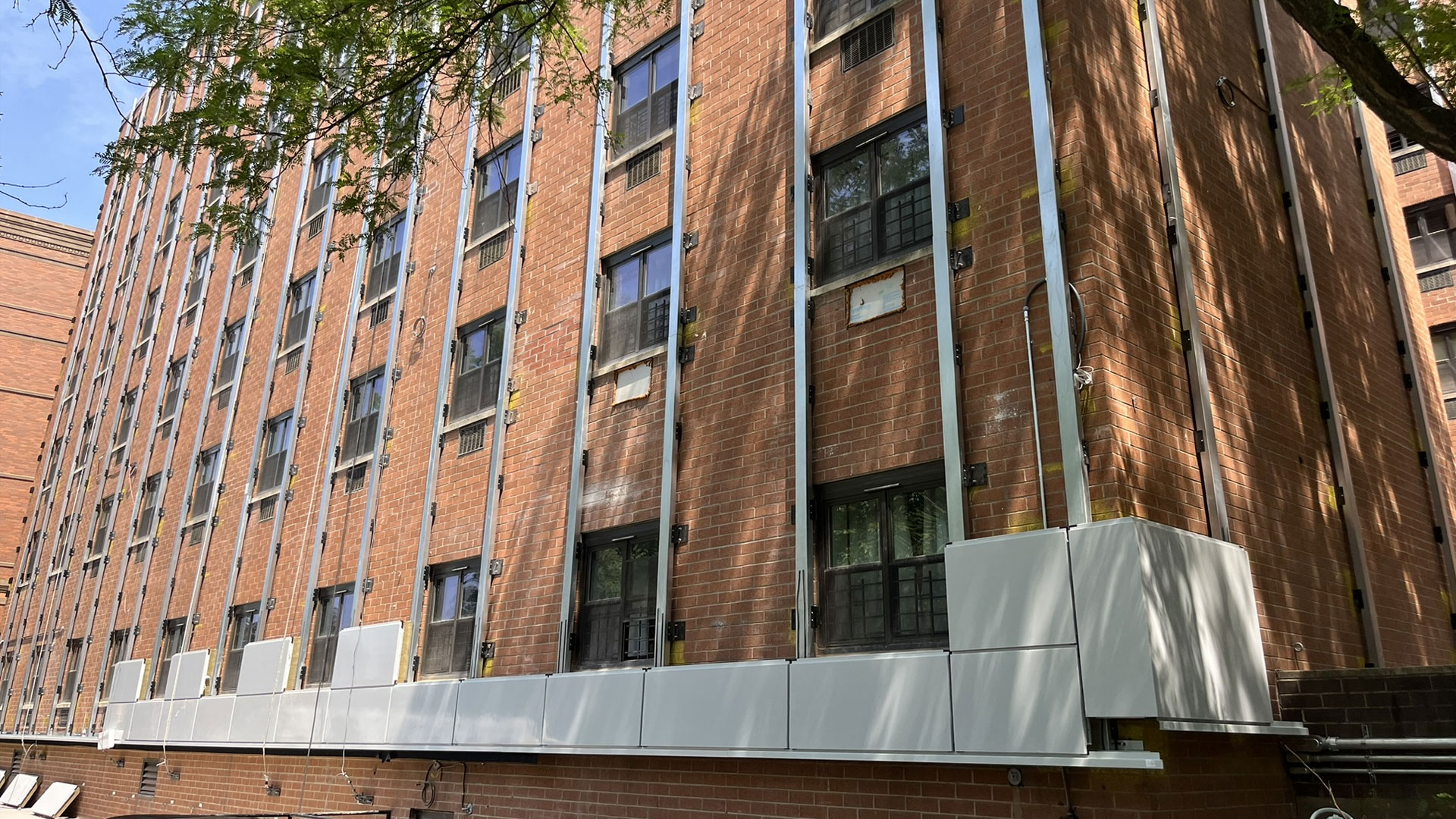
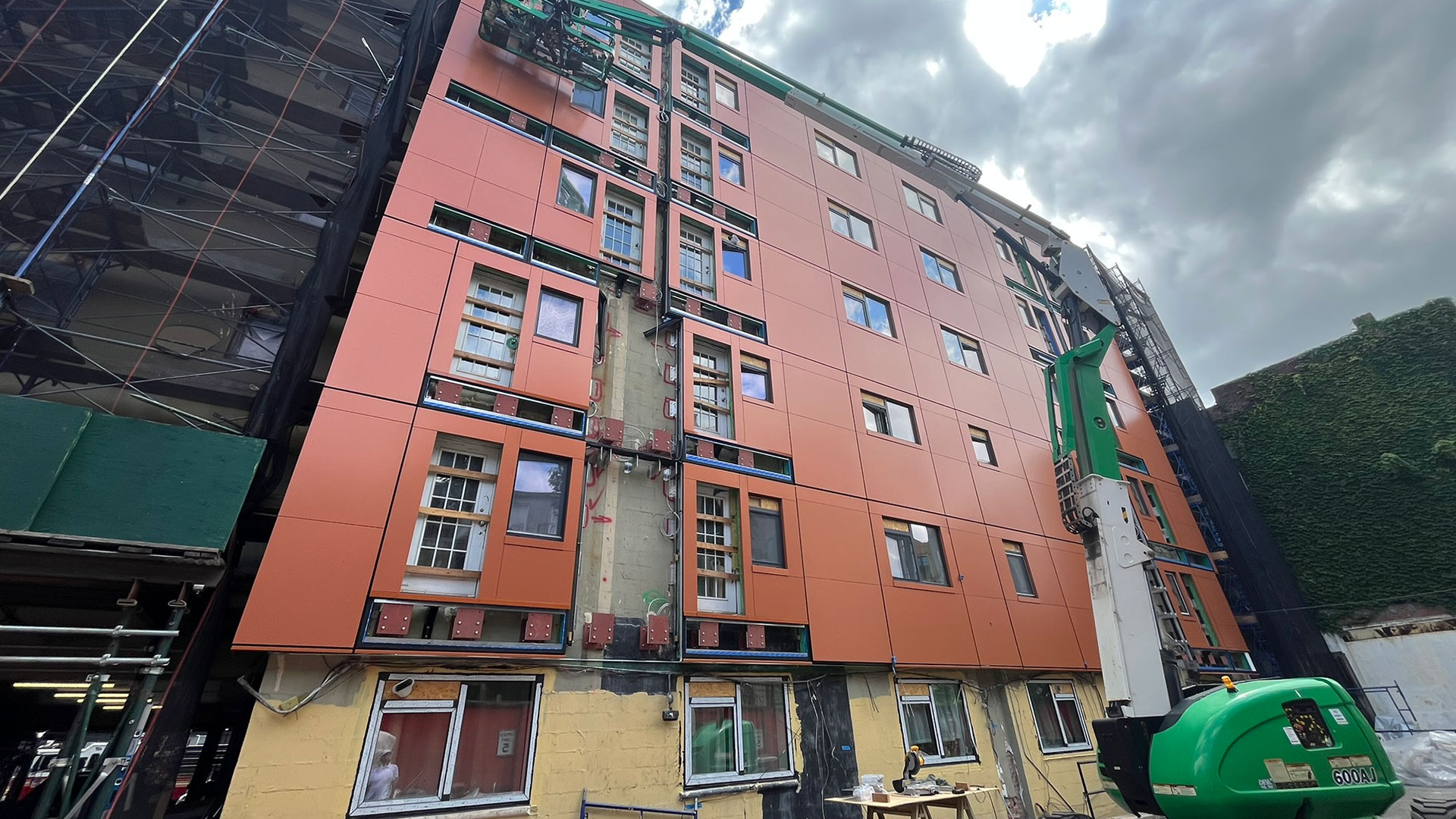
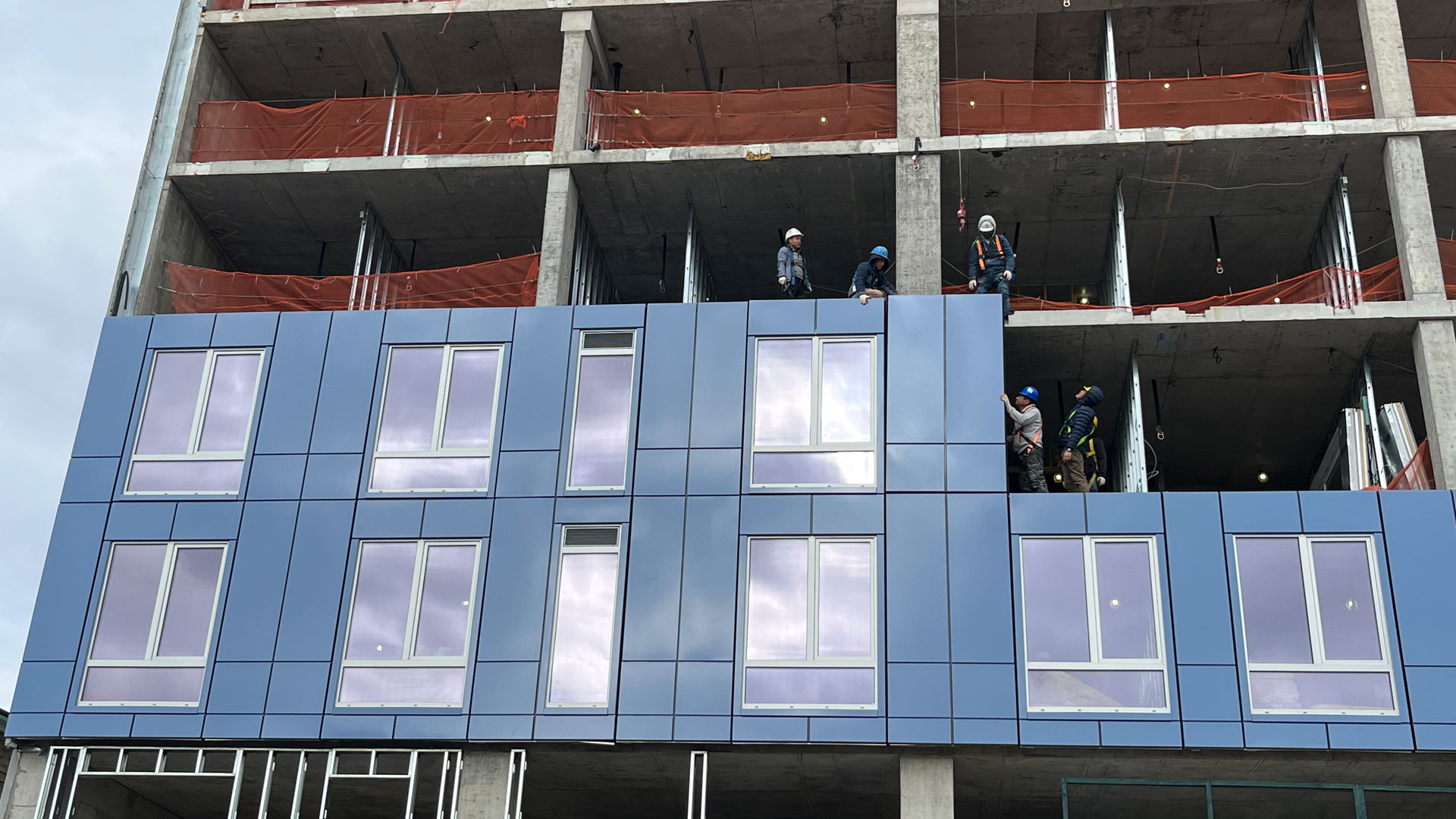
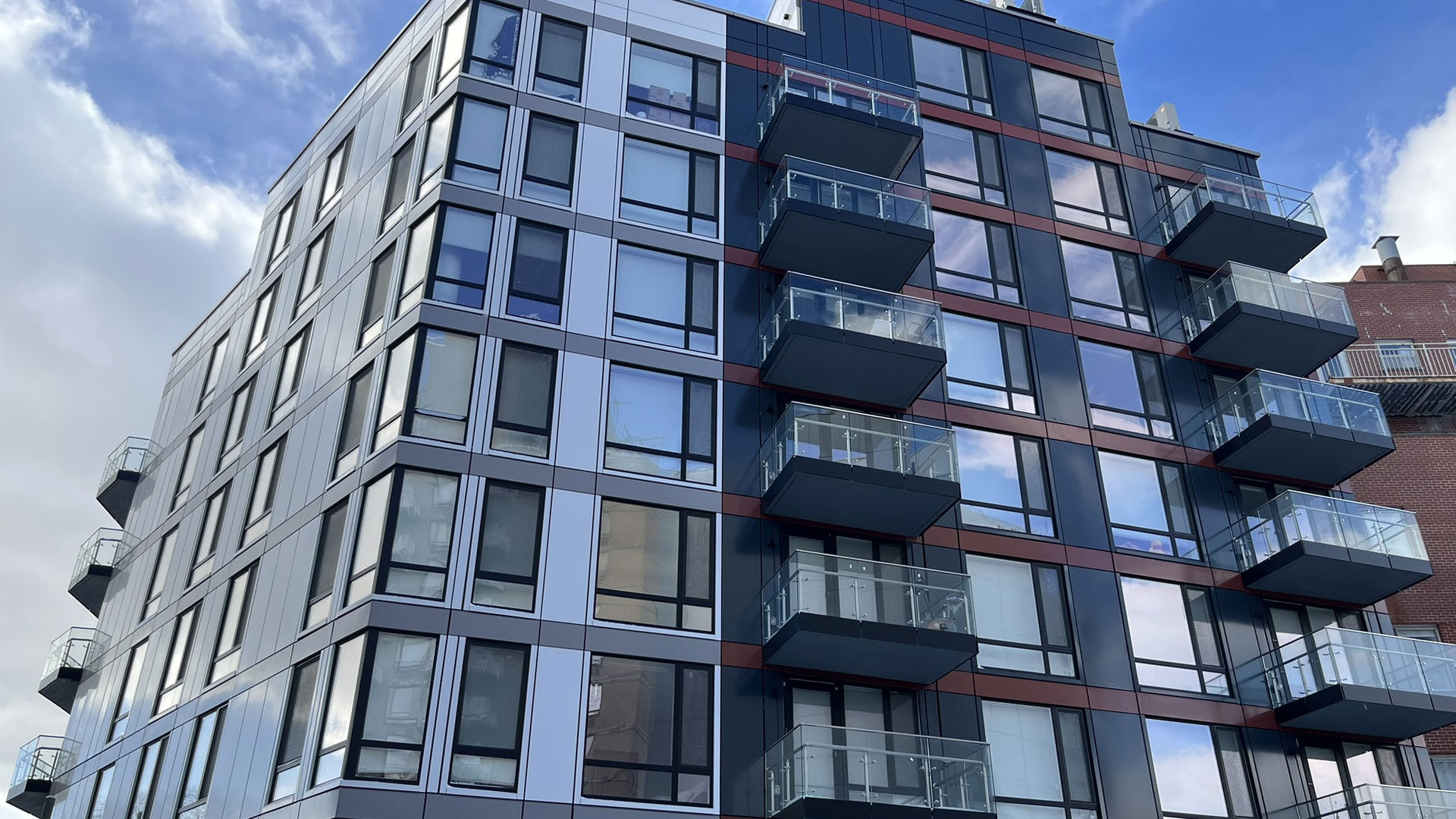
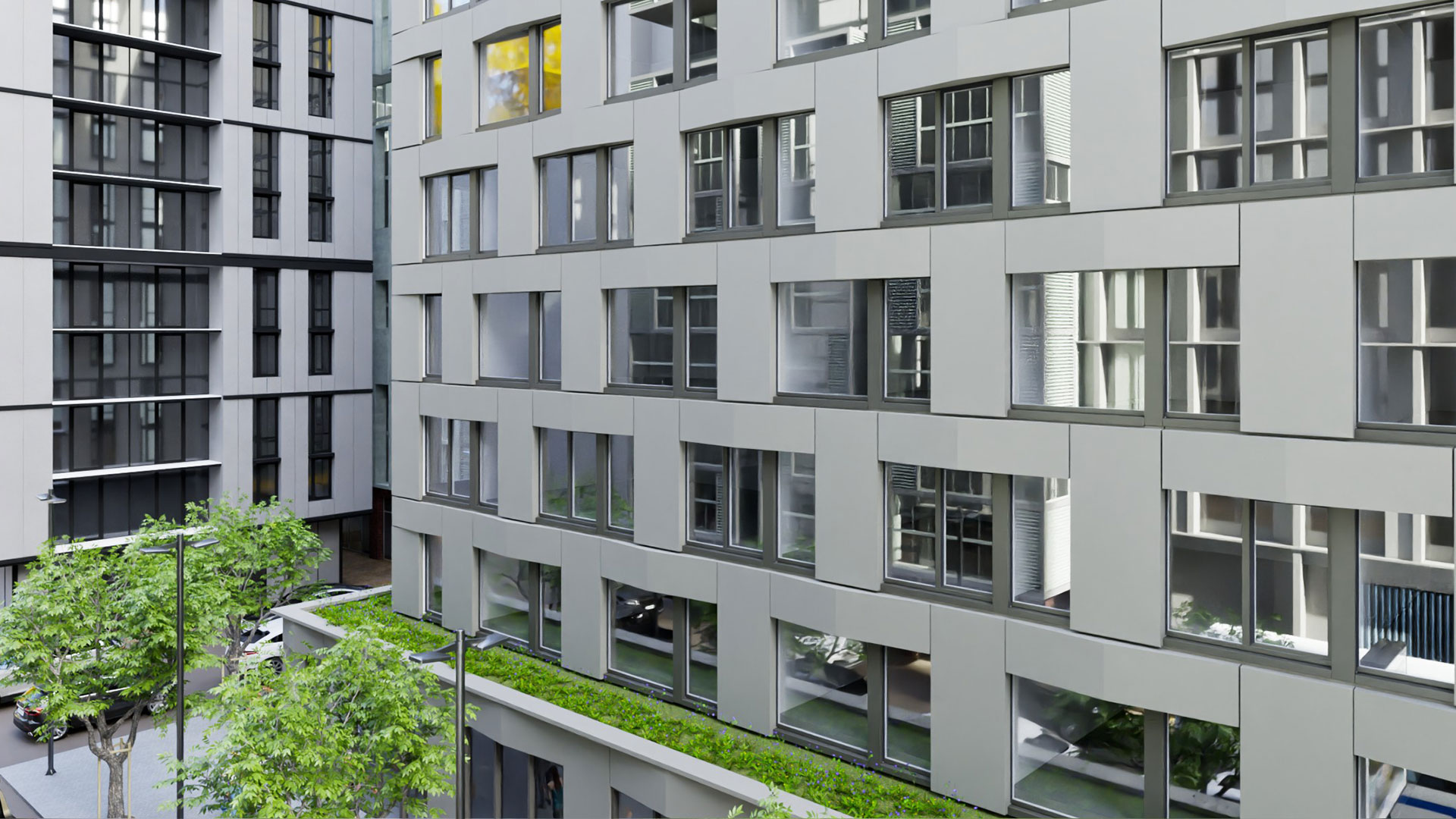
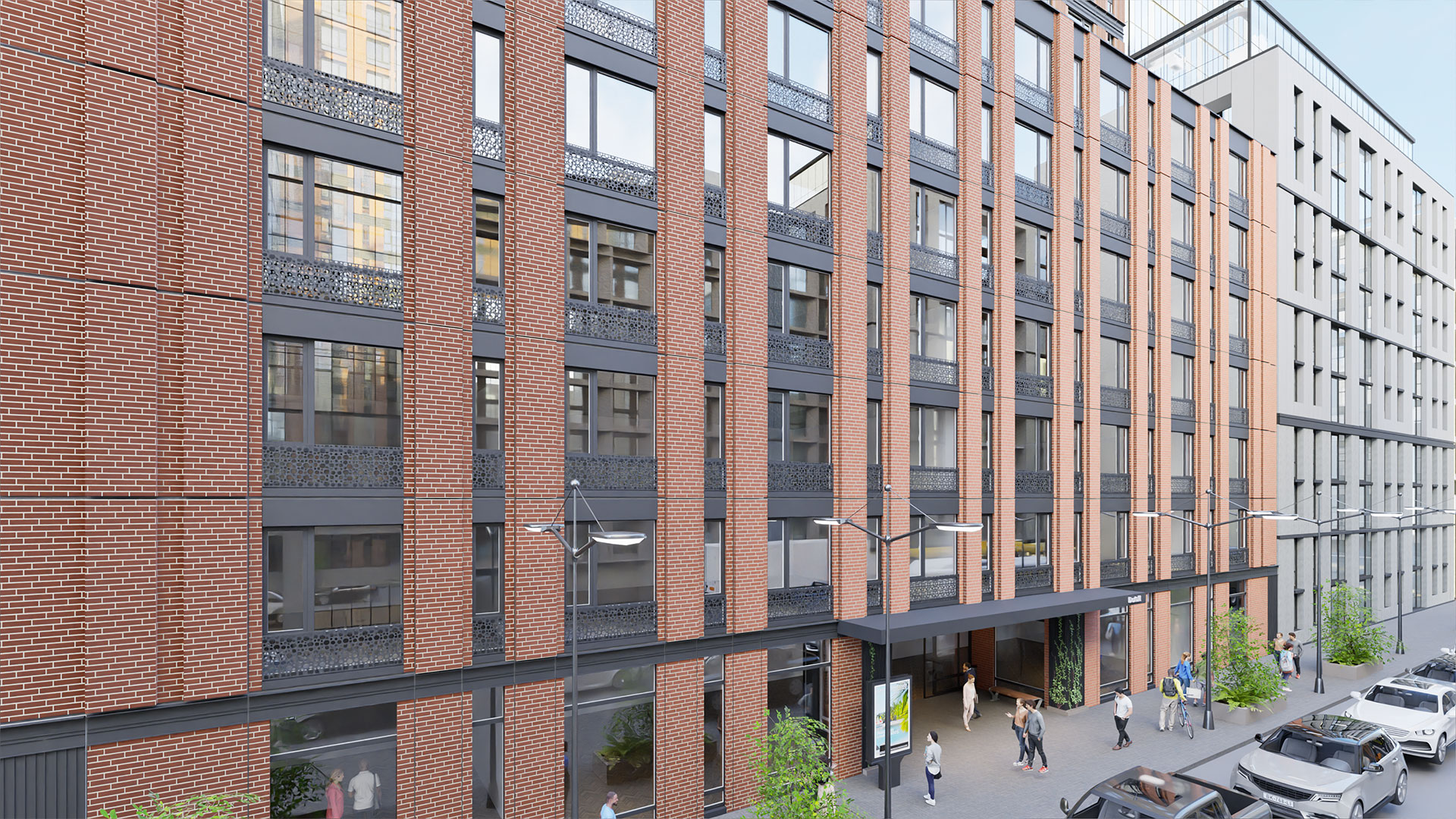
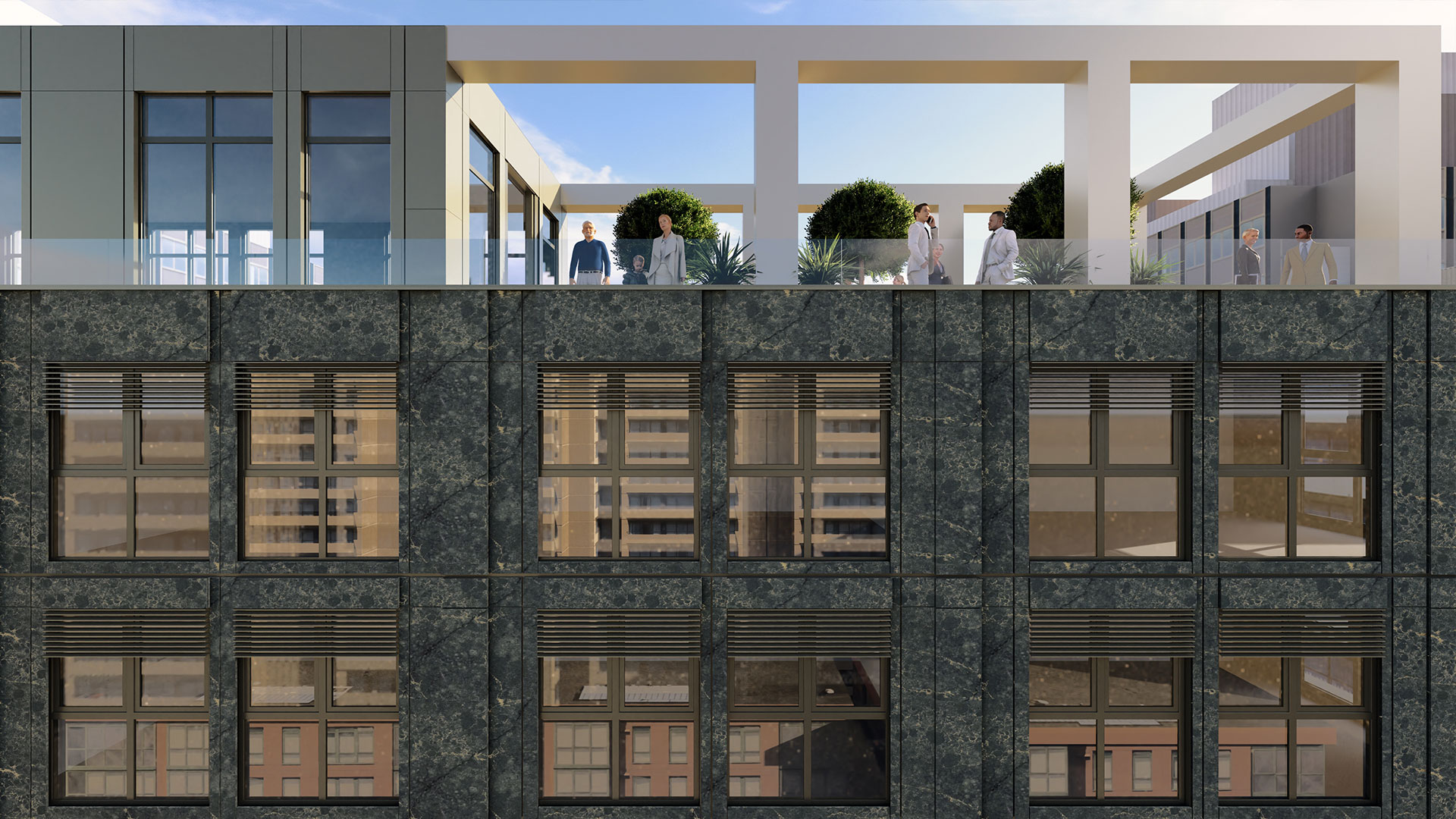
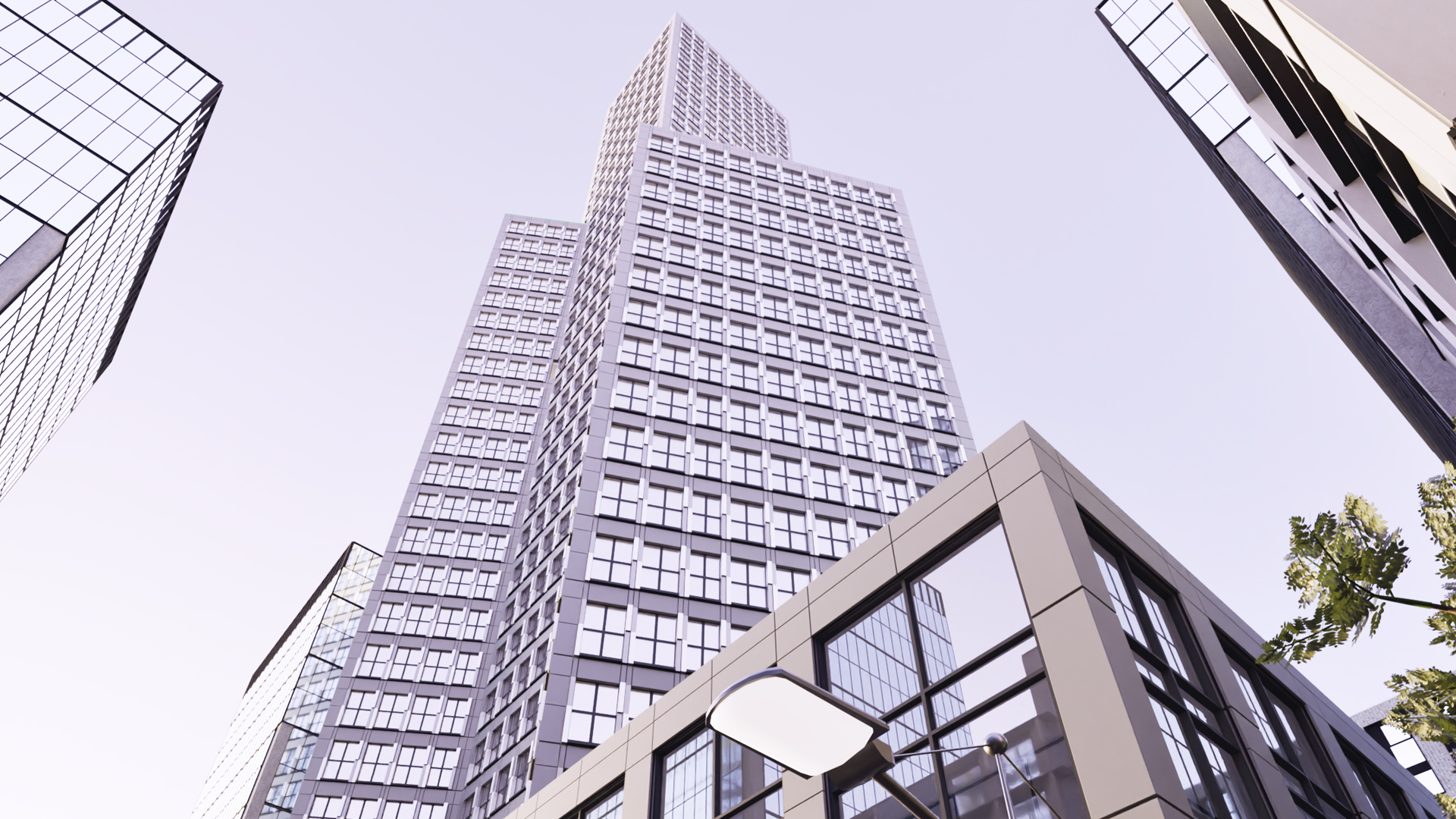
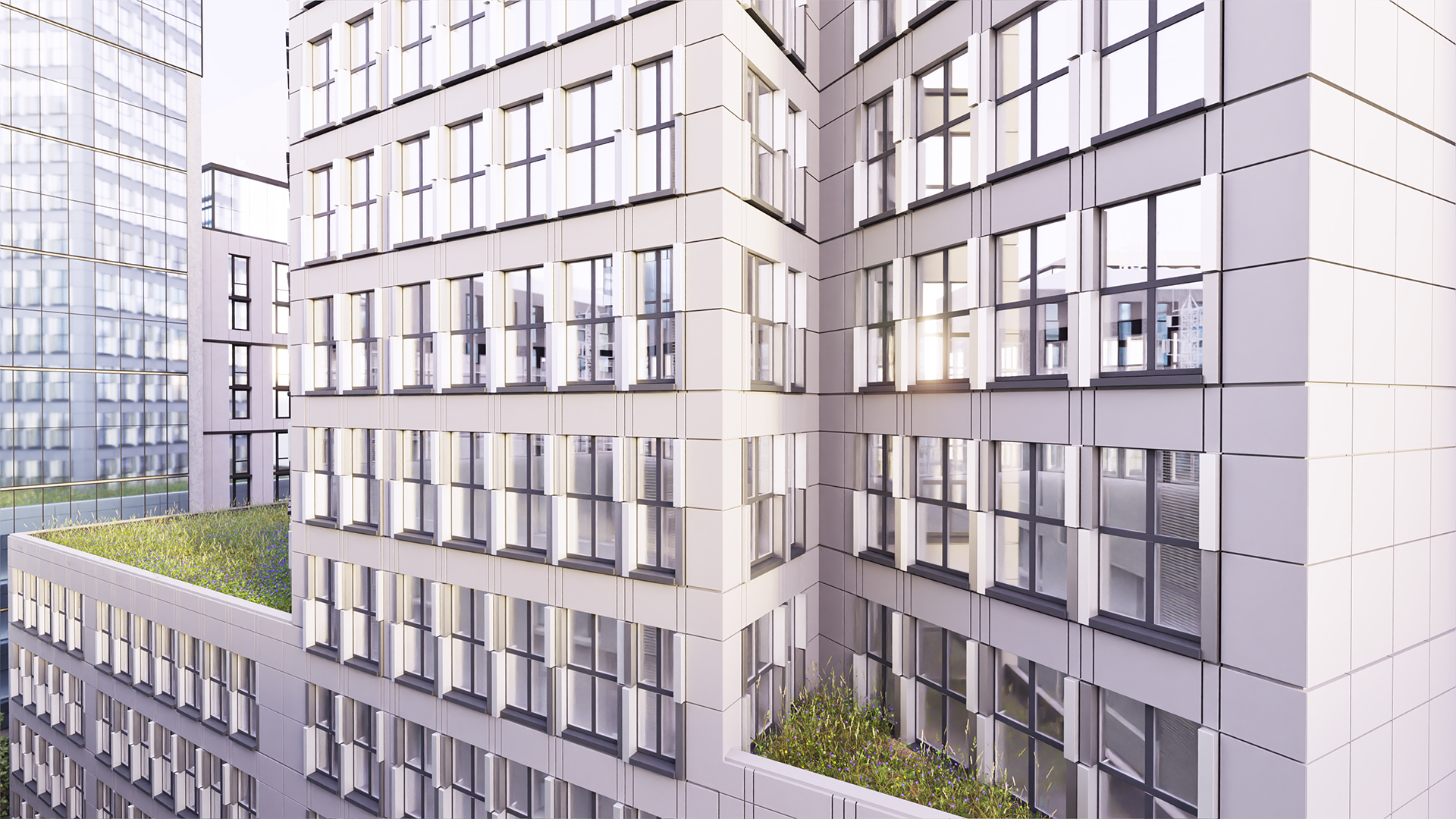






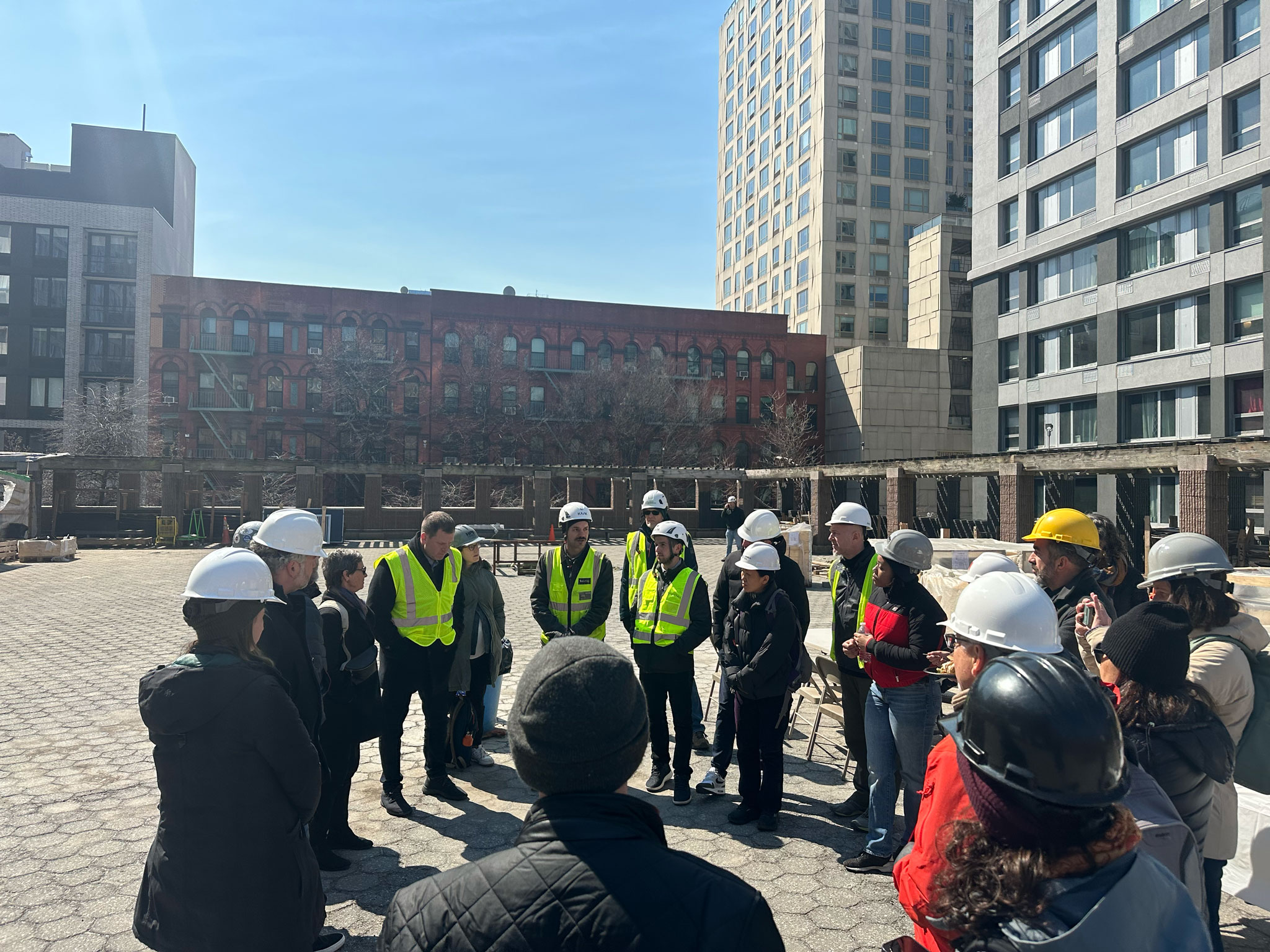



_format(webp).avif)
_format(webp)%20(6).avif)
_format(webp)%20(5).avif)
_format(webp)%20(4).avif)
_format(webp)%20(2).avif)
_format(webp)%20(3).avif)


.avif)
_format(webp)%20(2).avif)